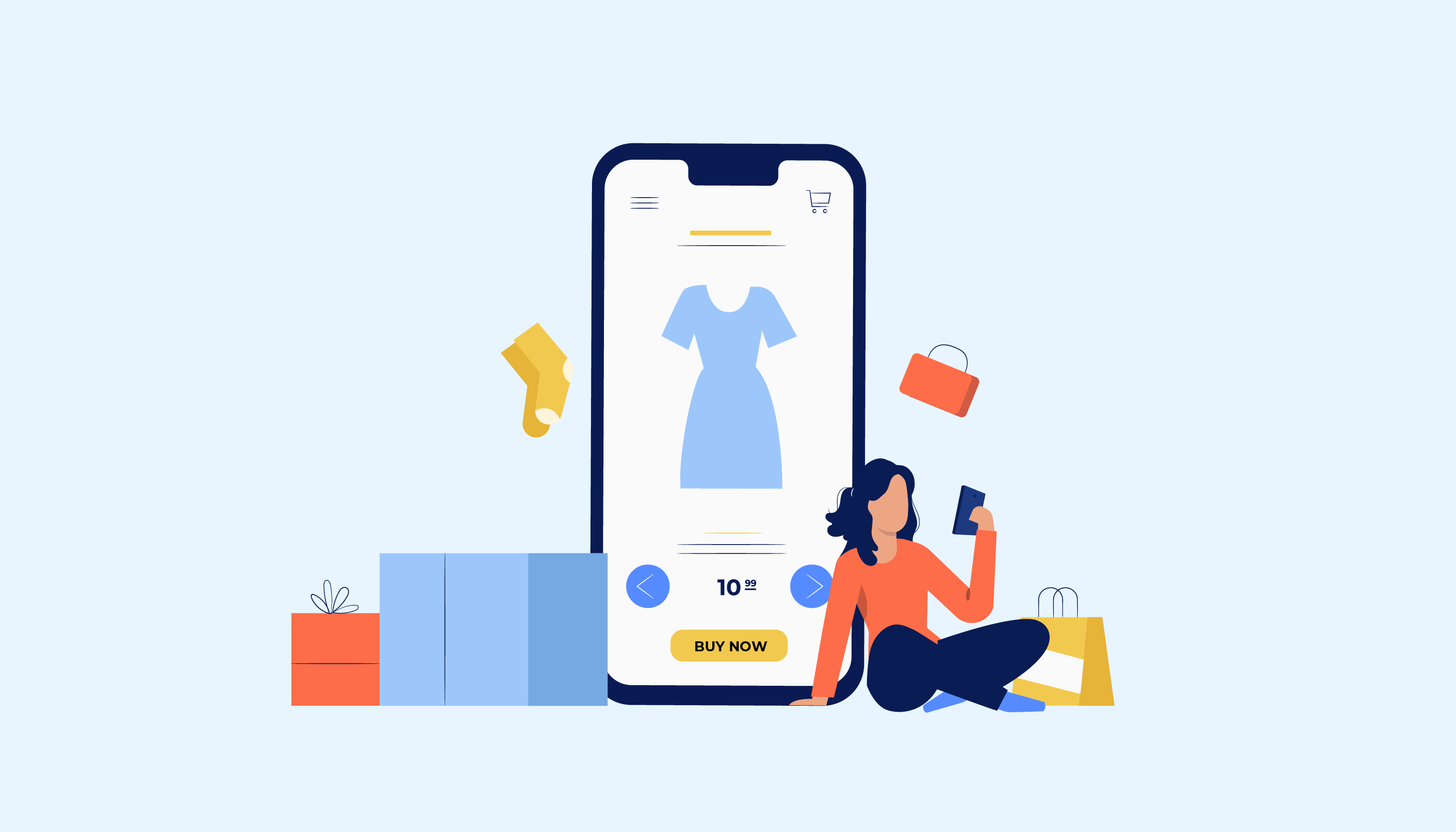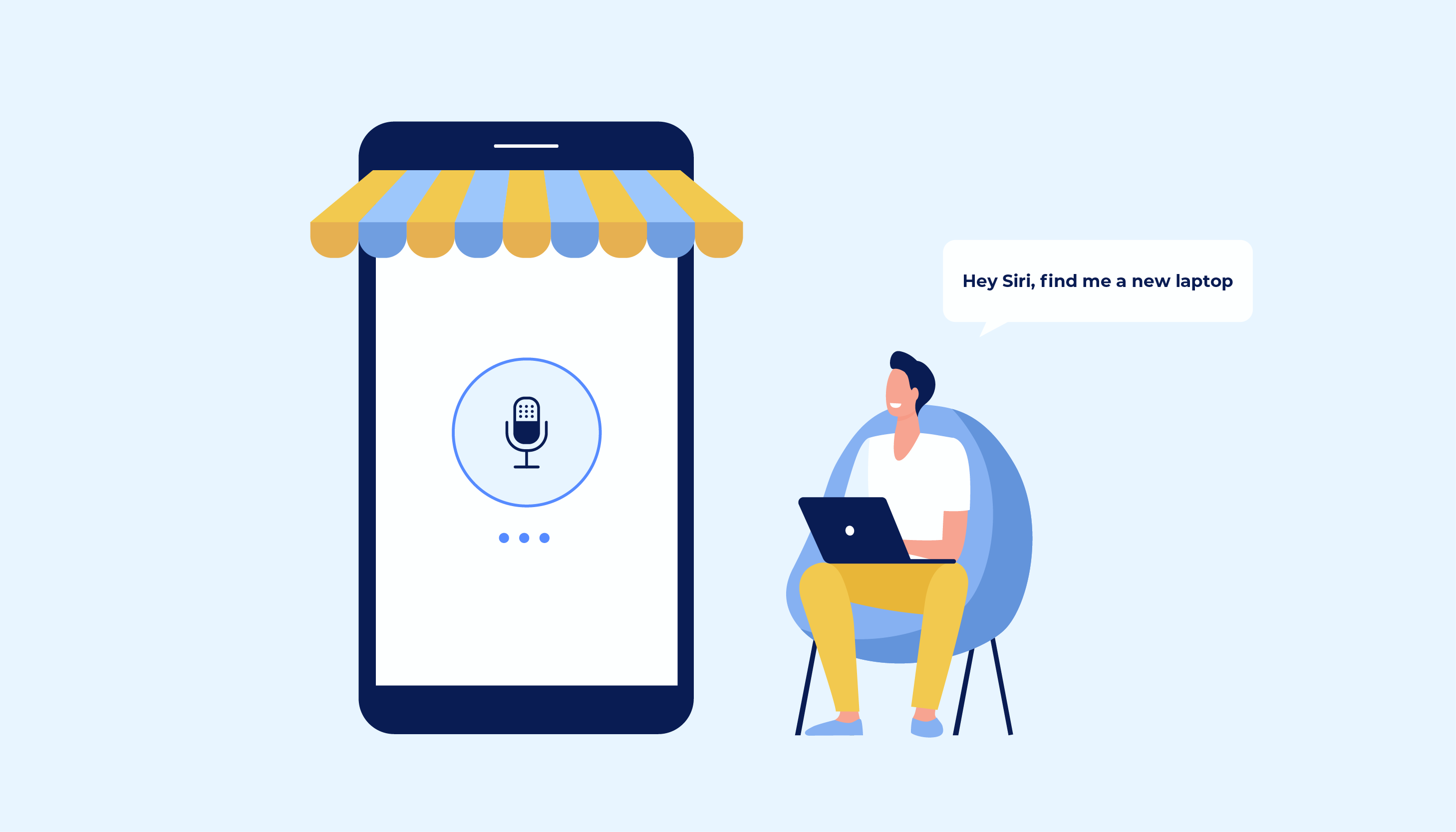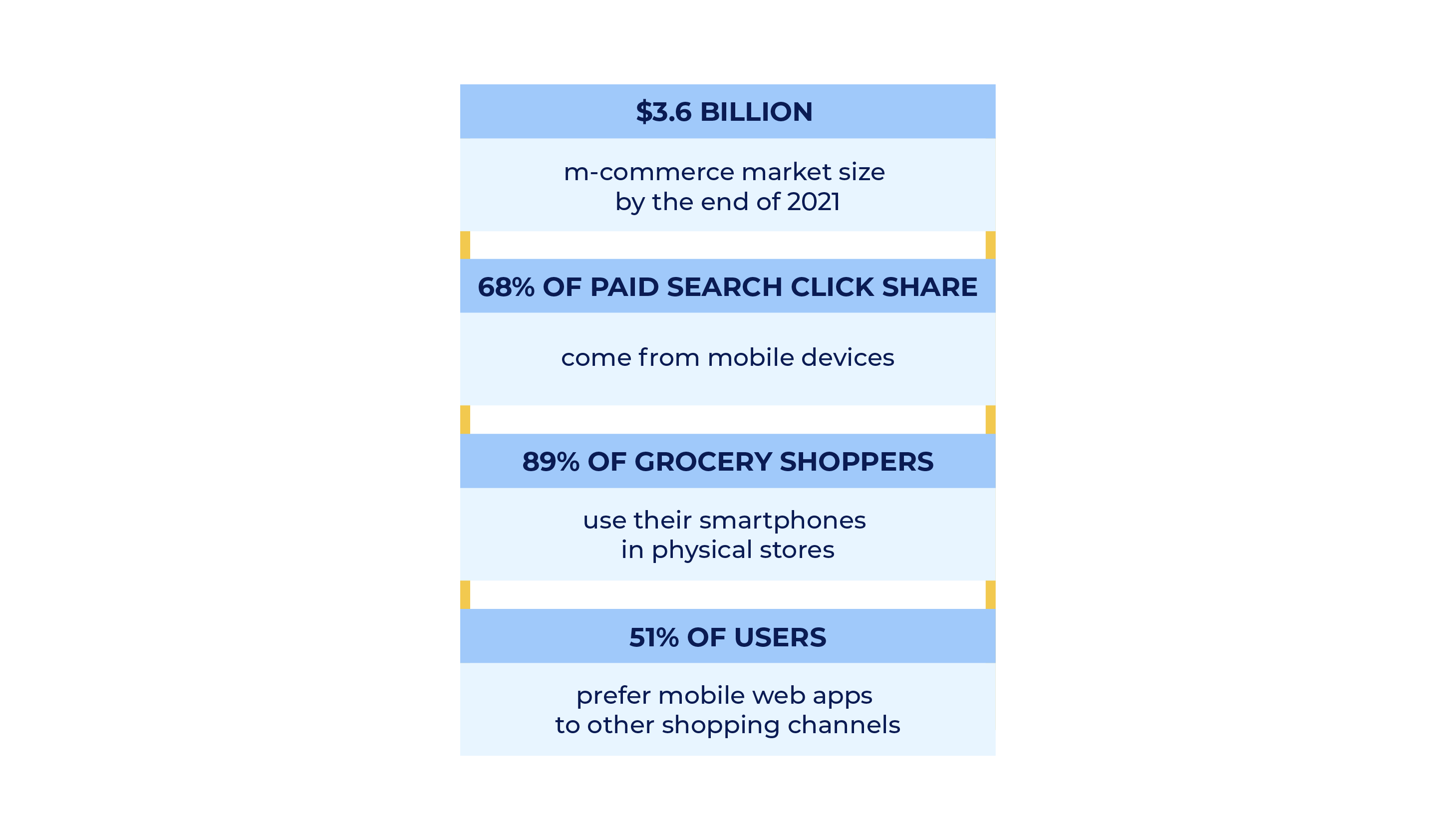Smartphones and other mobile devices have become a part of our routines. We use them for almost everything, including shopping on the go (also known as mobile commerce or m-commerce).
A December 2022 survey found that more than 60% of U.S. adults believe mobile shopping is important to make online shopping more convenient. Although not as critical as doorstep delivery, shipping or swift returns mobile shopping ranks high among the factors influencing online purchases.
With the increasing number of individuals buying through their mobile phones it is essential for stores and online retailers to ensure that their mobile websites and applications are user friendly. According to a forecast from June 2023, people in the USA will spend an average of around 3 hours and 15 minutes a day on their phones in 2024.
As more and more people use smartphones, mobile commerce sales are going up too. In 2024, mobile shopping sales in the US are estimated to reach $558.29 billion, accounting for about 7.4% of total retail sales. And in the same year, mobile shopping is expected to make up almost half of all online retail sales in the US.
This article explores mobile commerce statistics and trends that are crucial for retailers and marketers to effectively engage with their customers.
What Is M-Commerce All About and Why Should You Use It?
Innovative mobile commerce technologies enable customers to scroll through online stores and place their orders without laptops or desktop computers. We use mobile phones to order a new outfit or buy courses on our favorite learning platform while sitting in a taxi on our way home.
Apart from mobile shopping, m-commerce is a great way to use online banking, manage your bills, and pay for numerous services with your mobile device.
So what sets m-commerce apart from e-commerce? Well, e-commerce involves purchasing goods via a computer, whereas m-commerce revolves around utilizing your device. Carrying a laptop around can be cumbersome so mobile commerce offers convenience for online shopping on the go.
Mobile commerce essentially entails the buying and selling of goods via smartphones or tablets. It includes all transactions that are processed via a device regardless of the payment method used. With the increasing use of phones by the public, m-commerce has become more important for companies. They now prioritize ensuring that their websites and applications work seamlessly on the devices.
This process offers numerous benefits to both consumers and businesses. For consumers, it provides convenience, allowing them to shop and make purchases on the go, without the need for a desktop computer or laptop. With mobile commerce applications, people can compare prices, read reviews, and make purchases from anywhere, at any time, with just a few clicks. For businesses, m-commerce provides an opportunity to reach a broader audience and increase sales.

As mobile usage continues to grow, businesses that prioritize mobile optimization of their websites and m-commerce applications are better positioned to capture the attention of mobile users and offer them a seamless online shopping experience. In addition, this provides businesses with valuable data on consumer behavior and preferences, allowing them to better tailor their offerings and marketing strategies.
There are several types of m-commerce, each with its own unique advantages. Mobile applications, or “apps,” are a popular way for businesses to offer a dedicated online shopping experience to mobile users. Many companies have developed their own apps, which allow users to browse products, make purchases, and receive personalized recommendations.
Mobile wallets, such as Apple Pay and Google Wallet, are another popular form of m-commerce. They allow consumers to store their payment information securely on their mobile devices and make purchases with just a few taps. Mobile wallets also offer enhanced security features, such as biometric authentication, which can help protect against fraud and identity theft.
What’s more, mobile commerce allows retailers to interact with consumers in a more personalized way. User-friendly push notifications, AI integrations, one-click checkouts, and various mobile payment options provide clients with personalized mobile shopping experiences, increasing customer retention.
In addition to personalized online shopping experiences, mobile commerce is also an extra marketing channel. With special prices and free shipping for mobile users, mobile-only offers, coupons and promo codes, such apps can go viral and leverage their customer base much faster.

We shortlisted the core benefits of using m-commerce for e-commerce businesses:
-
Higher Revenue
By the end of 2022, mobile commerce sales hitted $3.56 billion, which means this shopping channel is relevant in the global world.
With a more straightforward checkout process, personalized push notifications and convenient online transactions, customers are more encouraged to make purchases using their mobile devices.
So, if you want to satisfy customer needs and generate more revenue, building an app for your retail business is a must-have to stay afloat in such a saturated market.
-
Enhanced Customer Experience
Intuitive navigation within an app, social media integration to share feedback, and personalized push notifications encourage customers to use such apps again and again.
Equipped with a user-friendly app, it’s much easier to grab your customers’ attention by providing them with a personalized buying experience and a seamless user journey. Learn more about mobile app design trends that will help boost UX.
-
Extra Marketing Opportunities
With a mobile commerce app, you have an opportunity to reach your customers directly and integrate your solution with social media platforms. You can encourage your audience to share feedback, communicate with each other, and spread the word about your company.
If your app goes viral and becomes popular with your audience, you can monetize it by placing in-app ads to drive more revenue.
-
Insightful Data
Mobile analytics can provide you with insight into your customers’ browsing history, patterns, and user behavior.
You can use this data to boost customer retention and provide your audience with more unique and personalized offers like segmented promotions and recommended products. This sophisticated mobile analytics enables you to target consumers with relevant offers that are more likely to convert.
The Latest Mobile Commerce Trends to Follow in 2024
In today’s fast-paced world, people want to do everything quickly and efficiently. With technological advancements, we’re seeing a significant shift toward mobile gadgets and their usage for everyday activities. One such shift is towards mobile commerce. Here are the latest mobile commerce trends of this phenomenon you should know in 2024.
-
Hyper-Personalized Push-Notifications
The surge in hyper-personalized push notifications is a trend in commerce focusing on tailoring notifications individually for each user based on their likes, behaviors, and preferences.
For instance; Let’s say you own a business that sells products like clothing. You have an application where customers can explore and purchase items, along with another app for customers to provide reviews and ratings for the products they bought.
When a customer posts a review or rating this feedback can be instantly shared from the review app to your app. Subsequently, your main app can utilize this data to send personalized push notifications to the customer taking into account their interests and tastes.
-
Social Commerce 2.0
Social Commerce 2.0 combines strategies and technologies that improve the social commerce experience as a whole. It allows for engagement with customers, promptly addressing their questions.
This approach offers an interactive method to connect with customers, boosting brand visibility and attracting those who might not have come across the brand through other means.
When users spot a product of interest while browsing their social media feed they can simply click on the item, check out its details, and complete a purchase—all within the social media platform.
-
Intelligent Chatbots
Did you know that businesses save up to 30% in customer support costs with the help of AI-powered chatbots? Such a solution is a great way to optimize resources and provide consumers with high-quality service.
Chatbots answer customer queries 24/7, help them find certain products, resolve simple issues and even place orders.
These smart assistants can mirror human-like communication and discern customers’ needs, making it much easier to provide users with a personalized experience and keep them engaged.
Dominos uses a smart chatbot to help customers choose a pizza, reorder any of their previous purchases and estimate the delivery time without leaving a Messenger.
-
One-Click Ordering
One-click ordering enables m-commerce apps to store customers’ data in their profiles, so they don’t have to re-enter that information manually. This saves your customers’ time and boosts your mobile commerce sales.

It’s annoying for a user to re-enter their name, address and card details every time they want to make a purchase at your store. As a result, mobile has an average cart abandonment rate of 85.6%. Using one-click ordering, customers save time, so this m-commerce trend is going to stay with us.
For instance, with Amazon’s one-click ordering, consumers choose a default shipping address and payment method.
What’s more, if a customer wants to buy five goods at once, the company does not need to charge them five times for shipping. Instead, it combines these orders together to reduce shipping costs.
-
Progressive Web Apps
A Progressive Web App is a technology that enables users to “install” a website on their smartphones and use it as an app. PWAs behave like native apps and require less space on mobile devices.
These apps also provide users with such benefits as instant updates, push notifications, offline access and short loading time. A customer can install an app through the web browser and access it from their device’s home screen.
Starbucks’ PWA was built to let customers look through the menu and place their orders on the go even without a stable Internet connection. This responsive and fast software provides customers with content-specific animations, nutrition information and customizable orders.
-
Voice Shopping
Voice shopping enables consumers to use virtual assistants like Siri and Alexa to shop online. Since 71% of customers prefer to use voice search over text, businesses can benefit from using this mobile commerce future trend. With voice shopping, customers can place their orders while cooking dinner, waiting for a taxi, or taking a walk.
Using voice commands, customers can search for a specific product, track their orders, add items to an online shopping list, and make transactions.

Mobile commerce statistics show that voice shopping has reached $40 billion in the last year. Thus, if you don’t want to fall behind, optimizing your app for voice search has become a vital practice to keep your business afloat.
Walmart enabled customers to voice shop with the help of Siri and Google Assistant. To activate this feature, users just have to say “Talk to Walmart” to their virtual helper.
This solution enables customers to fill a shopping cart with groceries, apply a promo code, set up delivery time, and proceed to checkout.
-
Augmented Reality
Augmented reality isn’t limited to gaming businesses that benefit from interactive experiences built with AR to showcase their products and let customers try them on before making a purchase.
Augmented fitting rooms are used to try on different clothing combinations or furniture recommendations.
Buyers can make sure a bed fits their interior. AR has become a fantastic tool to boost customer experience and change the entire concept of mobile shopping.
The AR app market is expected to reach $15.5 million by 2023, so it’s time to start following this mobile commerce trend to outpace your rivals and generate more revenue.
Warby Parker built an app that allows customers to try on an extensive range of glasses without leaving their homes. Before making a purchase, users can also share their selfies with friends, which increases engagement and brings more users to the app.
Thrilling M-Commerce Stats to Check Out
-
-
- Mobile commerce market size is predicted to hit $558.29 billion by the end of 2024.
- About 89% of grocery shoppers use their mobile devices while visiting physical stores.
- Mobile accounted for 61.9% of paid search click share in 2023.
- In 2022, mobile commerce revenue in the US reached $431 billion.
- Almost 80% of users have bought online using their mobile gadjets within the last six months.
- More than 51% of users prefer mobile web apps to other shopping channels. Customers claimed web apps are convenient and have consistent UI.
- Voice commerce sales are expected to generate $164B worldwide by 2025.
-

Mobile Commerce Examples: 3 Companies Dominating the Industry
As one of the largest educational platforms worldwide, Coursera helps users hone their skills in various areas, from science to humanities.
Coursera has 87+ million students and collaborates with leading companies such as Google, IBM, Intel and Microsoft. The company also partners with Duke University, Eindhoven University of Technology, Yale University, Copenhagen Business School, Berklee College of Music and others.
Students can enjoy both free and paid video courses, get certificates and even earn a college degree at home.
Coursera managed to bring its robust desktop UX to the mobile commerce application, which let students from developing countries learn without limits. As a result, 20% of students use Coursera on mobile devices only. With $142.2 million million of annual revenue generated in 2022, the company is expected to grow its value for years to come.

This huge retail corporation takes mobile shopping to the next level by offering exclusive features to app users. Customers can store gift cards on their smartphones and use them at checkout.
With special offers for mobile users and services like curbside pickup, Target’s Q1 sales grew by 19.78% to $106.005B.
App users can also scan the barcode to apply all their special offers, from gift cards to RedCard exclusives to save on their purchases.
The app also enables customers to order with Drive Up, allowing them to wait for their orders in a car.
Sephora is a renowned chain of cosmetic stores that allows all makeup addicts to try on hundreds of products from the comfort of their own homes. Virtual Artist is a sophisticated app equipped with facial recognition technology.
The app scans customers’ faces to ensure accurate product placement. Then, users can browse hundreds of makeup products and try on a certain foundation or lip gloss.
Apart from this feature, users can compare swatches, match their makeup to the most suitable outfits, and recreate the latest makeup trends.
This is a great way to encourage consumers to stay home during the pandemic and let them interact with their favorite stores online.
The list of great mobile commerce examples does not end here. Giants like Alibaba and Amazon have also taken mobile shopping to a new level. Especially after they harnessed the power of VR and set up virtual reality kiosks. Read more in our blog about how VR is changing the e-commerce industry.
Stay Aware of the Hottest Mobile Commerce Trends with LITSLINK!
M-commerce, or mobile commerce, refers to the buying and selling of goods and services using mobile devices such as smartphones and tablets. It has become increasingly popular in recent years due to the widespread adoption of mobile devices and the convenience they offer.
One of the biggest advantages of mobile commerce is its accessibility. Customers can make purchases from anywhere at any time, as long as they have an internet connection. This makes it easier for businesses to reach customers and for shoppers to find what they need without being limited by physical location or working hours. A great example of an m-commerce app is Champions developed by LITSLINK. This app allows sports lovers to buy merchandise from their favorite athletes from around the world.
Mobile commerce trends also offer a range of payment options, including mobile payment platforms such as Apple Pay and Google Wallet. These payment methods are fast and secure, making transactions quick and easy for both customers and businesses.
Another advantage of mobile commerce is that businesses can offer their customers a personalized mobile shopping experience for customers. By analyzing customer data and behavior, companies can tailor their marketing and sales strategies to target specific customer preferences and needs. This can lead to increased customer satisfaction and loyalty.
Mobile commerce also provides opportunities for businesses to streamline their operations and reduce costs. For example, digital transactions eliminate the need for physical stores, which can reduce expenses related to rent, utilities, and staff. Additionally, businesses use mobile technology to automate certain processes such as inventory management and order processing, which saves time and reduces errors.
However, there are also some challenges associated with m-commerce. One of the main challenges is security. Mobile devices are vulnerable to hacking and other types of cyberattacks, which can compromise sensitive customer information such as payment details and personal data.
Wrapping Up
M-commerce provides valuable data insights that businesses can use to optimize their marketing strategies and improve their customer experience. By analyzing customer behavior and purchase patterns, businesses can better tailor their offerings and promotions to meet customer needs and preferences.
Overall, m-commerce offers a convenient, accessible, and data-driven approach to buying and selling that is well-suited for today’s mobile-centric world. By adopting mobile commerce strategies, businesses can reach more customers, improve their sales processes and stay competitive in the modern marketplace
With our app m-commerce development agency, it’s much easier to build scalable and recognizable solutions and ensure your users enjoy secure and convenient online transactions, one-click ordering, voice shopping, and intelligent chatbots.
If you have an idea for a sleek and efficient mobile commerce app, contact us, and we’ll help you bring it to life!





